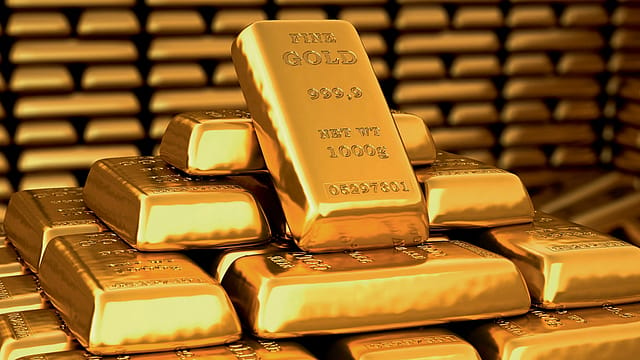Current gold price is a good entry point for investors
ADVERTISEMENT

Gold has been a favourable investment option in times of economic uncertainty. Despite soaring prices, the yellow metal has garnered investors in the last two years hit by the pandemic. If we look at the past growth in the net assets under management (AUM) under gold exchange-traded funds (ETFs), it has surged from ₹4,447 crore in March 2019 to ₹14,122 crore in March 2021 as per AMFI data. The Russia-Ukraine war further firmed inflation and thus raised the demand for gold even higher. As per March 2022 data, the net AUM under Gold ETF stood at ₹19,280 crore and ₹20,430 crore in April 2022, depicting an increase in investments by the investors. The global demand has been sturdy too.
As per the World Gold Council, the global gold demand in the first quarter was 1,234 tonne, 34% above Q1 2021, and 19% above the five-year average of 1,039 tonne. The demand was driven by Gold ETFs, which had their strongest quarterly inflows since Q3 2020. The demand for gold ETFs and other forms of investing in gold electronically, says Priti Rathi Gupta, founder, LXME, which claims to be India’s first financial platform for women, will see a positive trend in the coming years, as investor knowledge grows and with gold being used as a tool for diversification of portfolios, as a hedge against market volatility.
The near-term price levels of gold, believes Chirag Mehta, CIO, Quantum AMC, will offer an interesting opportunity to long-term investors. Mehta explains the Fed’s tightening cycle will continue to put downward pressure on gold for the next couple of months. On the other hand, he says, worries about growth, geopolitics, and inflation will keep demand supported. The result will be volatility and range bound prices, which can be a good entry point for long-term investors.
December 2025
The annual Fortune 500 India list, the definitive compendium of corporate performance, is out. This year, the cumulative revenue of the Fortune 500 India companies has breached $2 trillion for the first time. Plus, find out which are the Best B-schools in India.
“With so many moving parts, the likelihood of the Fed achieving a soft landing for the economy is low. A growth slowdown, high debt levels, and financial market instability will ensure that the Fed’s tightening is short-lived, making conditions conducive for gold again,” says Mehta.
But, investors should not get swayed by the rising prices amid geo-economic and geopolitical chaos. Investors should be guided by their asset allocation. As per Chirag Mehta, investors may keep anywhere between 10-15% of their portfolio in gold. “This is best achieved by staggering investments in gold ETFs and gold fund of funds.”
A 5-10% allocation of your portfolio in gold, says Priti Rathi Gupta, ensures averaging out any losses in the portfolio in the long term, during market falls, acting as a hedging tool. Inflationary pressure is not expected to come down soon, as per Swapnil Bhaskar, head of strategy, Niyo, a neo-bank for millennials, which may lead to underperformance of equity assets and diversion of funds to gold assets.
Thus, gold has given about 17% annualised return in the last 3 years and is expected to shine further. “Sovereign gold bonds (SGB), gold ETFs or gold mutual funds are good ways to take the exposure as storing physical gold is difficult and there is a trust deficit between buyers and sellers,” says Bhaskar.
